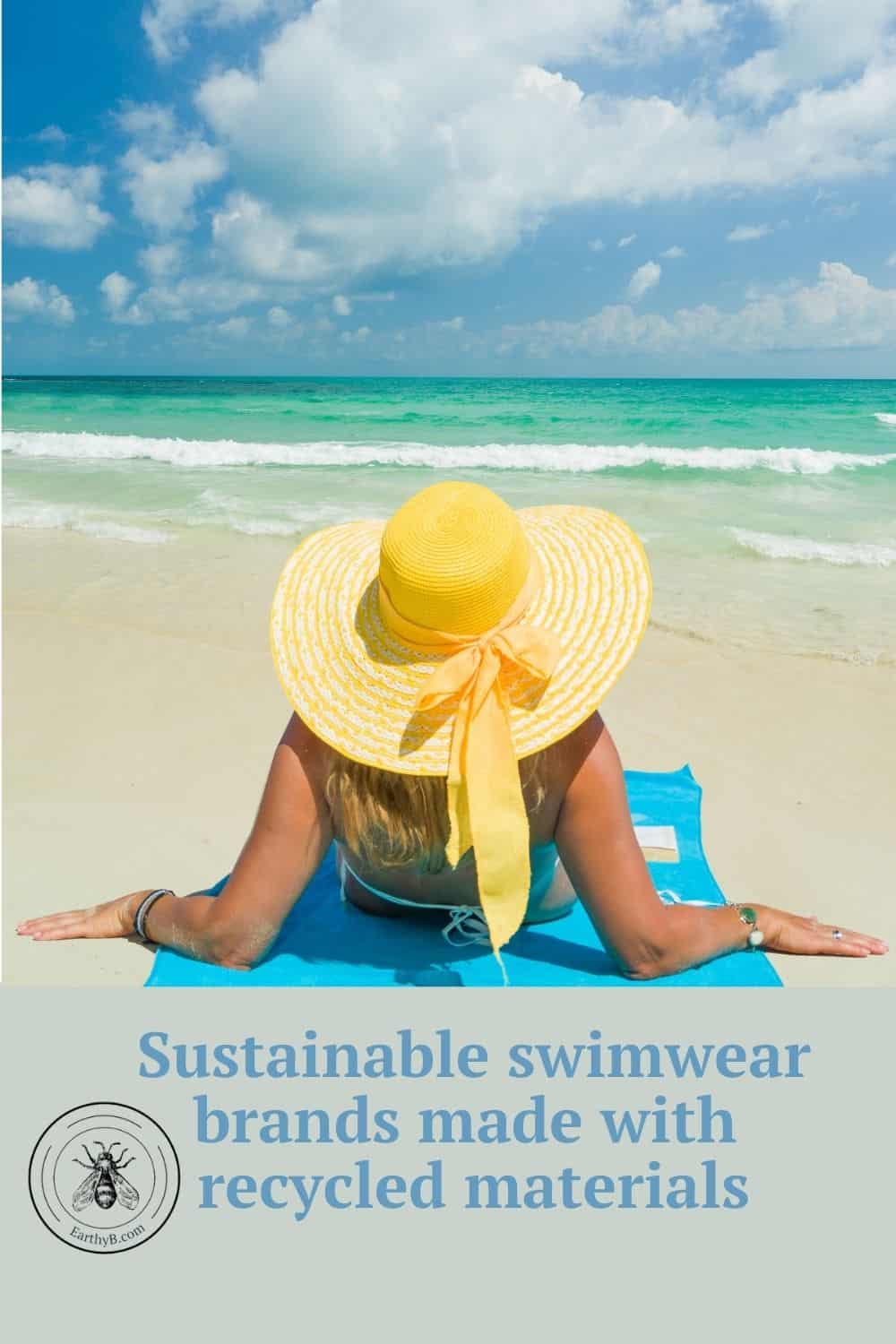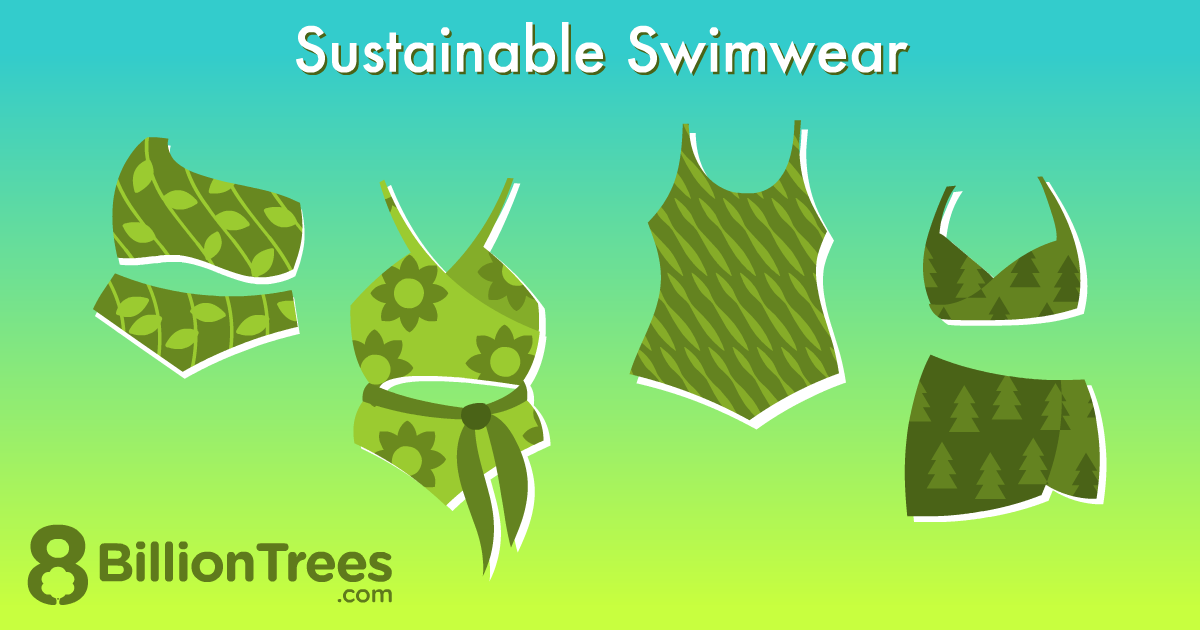Content Menu
● Introduction
● What Is Sustainable Swimwear?**
>> Key Characteristics of Sustainable Swimwear
● Why Does Sustainable Swimwear Matter?
>> The Environmental Impact of Traditional Swimwear
>> How Sustainable Swimwear Makes a Difference
● Materials Used in Sustainable Swimwear
>> 1. Recycled Plastics
>> 2. Organic Cotton
>> 3. Natural Rubber
>> 4. ECONYL®
● How Is Sustainable Swimwear Made?
>> The Production Process
● Benefits of Sustainable Swimwear
>> For the Environment
>> For Consumers
>> For Brands and Retailers
● Certifications and Standards
● How to Choose Sustainable Swimwear
>> The Benefits of Choosing Sustainable Swimwear
>> Tips for Consumers
>> Tips for Brands and Wholesalers
● Innovations in Sustainable Swimwear
● Caring for Sustainable Swimwear
● Popular Sustainable Swimwear Brands
● The Future of Sustainable Swimwear
● Frequently Asked Questions
● Conclusion
● Citations:
Introduction
In recent years, the swimwear industry has undergone a remarkable transformation. As environmental concerns grow and consumers become more eco-conscious, the demand for sustainable swimwear has surged. But what is sustainable swimwear, and why does it matter? This comprehensive guide explores the definition, materials, manufacturing processes, benefits, and future of sustainable swimwear—empowering brands, wholesalers, and consumers to make informed, responsible choices.

What Is Sustainable Swimwear?
Sustainable swimwear refers to swimsuits and beachwear designed and manufactured with minimal impact on the environment and a focus on ethical practices. Unlike traditional swimwear, which is typically made from virgin synthetic fibers like nylon and polyester (derived from petroleum), sustainable swimwear uses recycled or renewable materials and prioritizes responsible production methods[1][2][3].
Key Characteristics of Sustainable Swimwear
- Made from recycled or natural materials (e.g., ECONYL, recycled polyester, organic cotton, hemp)[1][2][3][4][5][6].
- Manufactured using energy-efficient and water-saving processes[7][8].
- Designed for durability and longevity to reduce waste[3][8].
- Produced with fair labor practices and transparent supply chains[7][5].
- Often features eco-friendly packaging and shipping methods[9][8].
Why Does Sustainable Swimwear Matter?
The Environmental Impact of Traditional Swimwear
Traditional swimwear relies heavily on synthetic fabrics like nylon and polyester. These materials are made from non-renewable resources, require significant energy to produce, and can take hundreds of years to decompose. Additionally, washing these garments releases microplastics into waterways, harming marine life and polluting oceans[2][3][5][8].
How Sustainable Swimwear Makes a Difference
- Reduces Plastic Waste: By using recycled materials such as fishing nets, plastic bottles, and textile scraps, sustainable swimwear helps clean up oceans and landfills[1][4][7][10][11][9][6].
- Lowers Carbon Emissions: The production of recycled fibers like ECONYL emits up to 90% less CO2 than virgin nylon[1][2].
- Conserves Resources: Sustainable manufacturing often uses less water and energy, further reducing environmental impact[2][4][7][8].
- Promotes Ethical Labor: Many sustainable brands commit to fair wages, safe working conditions, and transparent supply chains[7][5][12].
Materials Used in Sustainable Swimwear
| Material | Source/Description | Environmental Benefit |
| ECONYL | Regenerated nylon from fishing nets, carpets, and industrial waste | Reduces ocean plastic, lower emissions |
| Recycled Polyester (rPET) | Made from post-consumer plastic bottles and textile waste | Diverts waste from landfills/oceans |
| Organic Cotton | Grown without synthetic pesticides or fertilizers | Biodegradable, less water-intensive |
| Hemp | Fast-growing, requires minimal water/pesticides | Durable, biodegradable |
| Recycled Elastane/Spandex | Repurposed from post-industrial/consumer waste | Maintains stretch, reduces new resource use |
| Tencel/Lyocell | Made from sustainably sourced wood pulp | Biodegradable, closed-loop production |
| Limestone-based Neoprene | Alternative to petroleum-based neoprene for wetsuits | Lower carbon footprint |
These materials are chosen for their reduced environmental impact, durability, and ability to be recycled or biodegraded at the end of their life cycle[1][4][13][14][6].
1. Recycled Plastics
Many sustainable swimwear brands utilize recycled plastics, such as those derived from water bottles and fishing nets. This not only reduces the amount of plastic waste in the environment but also lowers the carbon footprint associated with producing new materials. For instance, brands like Andie Swim emphasize the use of recycled materials to significantly reduce CO2 emissions during production [source](https://andieswim.com/blogs/ooo-messages/what-is-sustainable-swimwear).
2. Organic Cotton
Organic cotton is another popular material in sustainable swimwear. Unlike conventional cotton, organic cotton is grown without harmful pesticides and fertilizers, making it a more environmentally friendly option. It is also biodegradable, which means it will not contribute to landfill waste at the end of its life cycle.
3. Natural Rubber
Natural rubber, harvested from rubber trees, is a sustainable alternative to synthetic materials. It is biodegradable and has a lower environmental impact during production compared to petroleum-based materials. This innovative material is gaining traction in the swimwear industry as brands seek to offer eco-friendly options without sacrificing quality [source](https://andieswim.com/blogs/ooo-messages/what-is-sustainable-swimwear).
4. ECONYL®
ECONYL® is a regenerated nylon made from discarded fishing nets and other nylon waste. This material is not only sustainable but also offers the same quality and durability as traditional nylon, making it a popular choice among eco-conscious swimwear brands [source](https://www.sustainablerookie.com/fashion/sustainable-swimwear-brands).

How Is Sustainable Swimwear Made?
The Production Process
1. Sourcing Materials: Waste materials such as fishing nets, plastic bottles, and fabric scraps are collected and cleaned[1][4][10][11].
2. Regeneration: Advanced recycling processes transform waste into new fibers that are chemically identical to virgin materials (e.g., ECONYL)[1][2][4].
3. Fabric Production: Recycled fibers are spun into yarn and woven into fabric, often using energy-efficient and water-saving technologies[4][7][8].
4. Garment Manufacturing: Swimwear is cut and sewn, often in factories that prioritize ethical labor practices and minimize waste[7][5][12].
5. Finishing Touches: Eco-friendly dyes and non-toxic treatments are used, and sustainable packaging is chosen for shipping[5][9][8].
Benefits of Sustainable Swimwear
For the Environment
- Reduces ocean and landfill waste by repurposing plastics and textiles[1][4][10][11][9][6].
- Cuts carbon emissions through energy-efficient recycling and manufacturing[1][2][8].
- Minimizes water pollution by using non-toxic dyes and reducing microplastic shedding[5][14][8].
- Supports biodiversity by reducing the demand for virgin materials and protecting marine life[2][3][10][11].
For Consumers
- Durable and long-lasting: High-quality materials ensure swimwear lasts multiple seasons, reducing the need for frequent replacements[3][8].
- Comfort and performance: Modern recycled fabrics offer the same stretch, fit, and UV protection as traditional materials[15][13].
- Unique designs: Many sustainable brands offer limited editions or nature-inspired patterns, adding diversity to your wardrobe[3][9].
- Peace of mind: Knowing your purchase supports ethical labor and environmental protection[7][5][12].
For Brands and Retailers
- Market differentiation: Sustainable swimwear appeals to eco-conscious consumers and enhances brand reputation[3][11][9].
- Compliance with regulations: Increasing global scrutiny on sustainability makes eco-friendly practices a smart business move[12][8].
- Potential for innovation: Embracing new materials and processes drives creativity and industry leadership[11][9][8].
Certifications and Standards
When shopping for or manufacturing sustainable swimwear, look for certifications that verify eco-friendly claims:
- Global Recycled Standard (GRS): Ensures recycled content and responsible production[2][9].
- OEKO-TEX Standard 100: Tests for harmful substances in textiles[2][9].
- U Trust: Verifies recycled content in fabrics[2].
- Fair Trade/SA8000: Certifies ethical labor practices[5][12].
These certifications help consumers and partners identify genuinely sustainable products and avoid greenwashing.
How to Choose Sustainable Swimwear
The Benefits of Choosing Sustainable Swimwear
1. Environmental Impact: By choosing sustainable swimwear, consumers can significantly reduce their carbon footprint and contribute to the fight against plastic pollution.
2. Durability: Sustainable swimwear is often made to last, meaning fewer replacements and less waste.
3. Healthier Choices: Eco-friendly materials are less likely to contain harmful chemicals, making them safer for both the wearer and the environment.
Tips for Consumers
- Check the label: Look for recycled or natural materials like ECONYL, rPET, or organic cotton[1][4][6].
- Research the brand: Choose companies that disclose their supply chain and manufacturing practices[7][5][12].
- Look for certifications: GRS, OEKO-TEX, and Fair Trade are good indicators of sustainability[2][9].
- Consider durability: Invest in high-quality swimwear designed to last multiple seasons[3][8].
- Opt for timeless styles: Classic designs reduce the urge for frequent replacements, supporting slow fashion principles[3][5].
Tips for Brands and Wholesalers
- Source certified, sustainable fabrics from reputable suppliers[2][4][7].
- Prioritize ethical manufacturing with fair labor and safe working conditions[7][5][12].
- Minimize packaging waste by using compostable or recycled materials[9][8].
- Engage in transparency: Share your sustainability journey and certifications with customers[11][5][9].
- Educate your audience: Highlight the benefits of sustainable swimwear in marketing and product descriptions[3][11][9].
Innovations in Sustainable Swimwear
The industry continues to evolve, with exciting innovations such as:
- Biodegradable swimwear: Fabrics that break down naturally at the end of their life cycle[5][6].
- Plant-based textiles: Hemp, organic cotton, and Tencel offer renewable, biodegradable alternatives[4][6].
- Closed-loop recycling: Systems that allow old swimwear to be returned and recycled into new products[1][4].
- Carbon-neutral production: Brands offset emissions through renewable energy and reforestation projects[5][9].
Caring for Sustainable Swimwear
Proper care for sustainable swimwear can extend its life and reduce environmental impact. Here are some tips:
- Hand Wash: Instead of machine washing, hand washing can help preserve the fabric and reduce microplastic release.
- Air Dry: Avoid using a dryer; instead, air dry your swimwear to maintain its shape and elasticity.
- Avoid Harsh Chemicals: Use mild detergents and avoid bleach to keep the fabric in good condition.
Popular Sustainable Swimwear Brands
Several brands are leading the way in sustainable swimwear, including:
- Andie Swim: Known for its use of recycled materials and commitment to sustainability.
- Summersalt: Offers stylish swimwear made from recycled textiles, focusing on fit and comfort.
- Outerknown: A brand that emphasizes ethical production and sustainable materials, including recycled polyester.
- Talia Collins: Specializes in luxury swimwear made from ECONYL® and other sustainable materials.

The Future of Sustainable Swimwear
As consumer awareness grows and technology advances, sustainable swimwear is poised to become the new standard. Brands, manufacturers, and consumers all play a role in driving this positive change. By choosing eco-friendly materials, supporting ethical practices, and prioritizing durability, we can protect our oceans and planet for generations to come[3][11][8].
Frequently Asked Questions
1. What is sustainable swimwear made of?
Sustainable swimwear is typically made from recycled materials like ECONYL (regenerated nylon from fishing nets and waste), recycled polyester (from plastic bottles), organic cotton, hemp, or other plant-based fibers. These materials reduce environmental impact compared to traditional synthetics[1][4][6].
2. How does sustainable swimwear help the environment?
By using recycled and renewable materials, sustainable swimwear reduces plastic waste, lowers carbon emissions, conserves resources, and minimizes microplastic pollution. It also supports ethical labor and responsible production[2][3][5].
3. Is sustainable swimwear as durable as traditional swimwear?
Yes. Modern recycled fabrics offer the same stretch, fit, and UV protection as traditional materials, and are often designed for greater durability, lasting multiple seasons[15][13][8].
4. How can I tell if a swimwear brand is truly sustainable?
Look for transparency in sourcing and manufacturing, third-party certifications (like GRS or OEKO-TEX), and clear information about materials and ethical practices on the brand's website[2][7][5].
5. Does sustainable swimwear cost more?
Sustainable swimwear may have a higher upfront cost due to the use of premium recycled materials and ethical labor. However, its durability and positive environmental impact often make it a better long-term investment[12][9][8].
6. Can sustainable swimwear be recycled again?
Many sustainable swimwear materials, such as ECONYL, can be recycled multiple times, supporting a circular economy and further reducing waste[1][4][6].
Conclusion
Sustainable swimwear represents a vital shift in the fashion industry, offering stylish, durable, and eco-friendly alternatives to traditional swimwear. By embracing recycled materials, ethical manufacturing, and transparent practices, brands and consumers alike can help protect our oceans and planet. Whether you're a brand owner, wholesaler, or conscious shopper, choosing sustainable swimwear is a powerful way to make a positive impact.
Citations:
[1] https://andieswim.com/blogs/ooo-messages/what-is-sustainable-swimwear
[2] https://swimwearbali.com/difference-between-traditional-swimwear-and-sustainable-swimwear/
[3] https://theamberpost.com/post/why-sustainable-swimwear-is-the-future-of-fashion
[4] https://apneeswimwear.com/en/blogs/carnet-de-bord/eco-friendly-materials-in-swimwear?srsltid=AfmBOoqzKHHwnD4VciJLffKCC4GdHugMVDFfIy_l2VKAu_g9eIRsEpnE
[5] https://www.finnandemma.com/blogs/news/sustainable-beachwear-how-to-choose-eco-friendly-swimwear-for-a-greener-beach-day
[6] https://tropicalseasclothing.com/en-de/blogs/news/eco-friendly-swimwear-a-guide-to-sustainable-beachwear?srsltid=AfmBOopQ5mjcwvyzD9JdUnAZDd-8c5pJUdhylviVdnU_ME_vdcGW_Mok
[7] https://gtportugal.com/insights/sustainable-in-swimwear-production
[8] https://www.swimjim.com/making-waves-the-essential-guide-to-sustainable-swimwear
[9] https://www.sustainablerookie.com/fashion/sustainable-swimwear-brands
[10] https://www.organicspamagazine.com/eco-friendly-swimwear/
[11] https://www.unsustainablemagazine.com/sustainable-swimwear-brand-guide/
[12] https://www.abelyfashion.com/ethical-swimwear-manufacturers-a-sustainable-choice-for-eco-conscious-consumers.html
[13] https://abysseofficial.com/pages/abysse-faq
[14] https://bombshellbayswimwear.com/blogs/ghost-nets-and-what-they-are-doing-to-our-oceans/the-ultimate-guide-to-ethical-and-sustainable-swimwear
[15] https://www.summersalt.com/collections/swimwear
[16] https://swimwearbali.com/10-common-questions-about-swimwear-manufacturing
[17] https://www.thereformation.com/clothing/swim
[18] https://www.instagram.com/sanlorenzo_bikinis/
[19] https://www.theseea.com/collections/recycled-fabrics-collection
[20] https://www.reddit.com/r/ethicalfashion/comments/1avtc1r/ethicalsustainable_swimwear/
[21] https://www.sundazebikinis.com/collections/hot-pink-sustainable-swimwear
[22] https://nomadsswimwear.com
[23] https://www.euronews.com/green/2019/11/25/stay-wild-swim-the-influencers-using-regenerated-ocean-plastic-to-empower-women
[24] https://www.cbsnews.com/video/fair-harbor-clothing-turns-plastic-bottles-into-swimwear/
[25] https://cyprus-mail.com/2021/07/19/sustainable-swimwear-get-ready-for-summer-with-these-eco-friendly-swimmers
[26] https://www.abelyfashion.com/10-key-questions-to-ask-your-potential-ethical-swimwear-manufacturing-partner.html
[27] https://www.amexessentials.com/sustainable-swimsuit-brands-eco-friendly-swimming-costumes/


































































